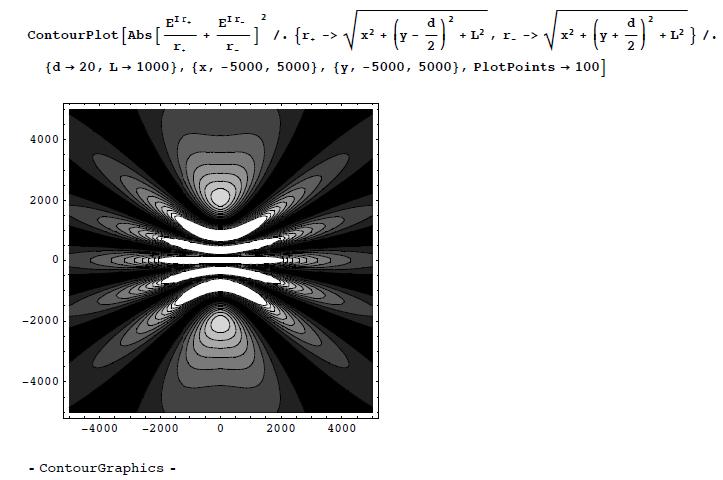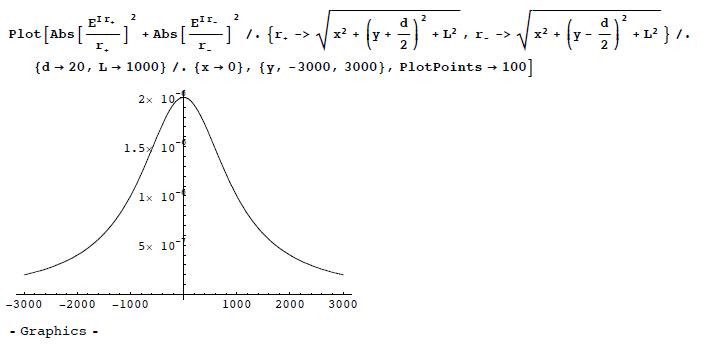Phy5645/Double pinhole experiment: Difference between revisions
Jump to navigation
Jump to search
No edit summary |
No edit summary |
||
| Line 1: | Line 1: | ||
Submitted by team 1 | Submitted by team 1 | ||
-------- | -------- | ||
(a) As directed, we assume that the denominators are approximately the same between two waves. This is justified because the corrections are only of the order of <math>d/l\!</math>, and we are interested in the case where <math>d<<L\!</math>. We require that the numerators have the same phase, namely <math>kr_{+}-kr_{-}=2\pi n\!</math>. We expand the LHS with respect to <math>d\!</math>, | (a) As directed, we assume that the denominators are approximately the same between two waves. This is justified because the corrections are only of the order of <math>d/l\!</math>, and we are interested in the case where <math>d<<L\!</math>. We require that the numerators have the same phase, namely <math>kr_{+}-kr_{-}=2\pi n\!</math>. We expand the LHS with respect to <math>d\!</math>, | ||
Revision as of 14:53, 16 April 2013
Submitted by team 1
(a) As directed, we assume that the denominators are approximately the same between two waves. This is justified because the corrections are only of the order of , and we are interested in the case where . We require that the numerators have the same phase, namely . We expand the LHS with respect to ,
Therefore,
and hence
(b) Let us choose the unit where k = 1. Then we pick d = 20, L = 1000. Here is the interference pattern. First along the y-axis (x = 0):
(c) Now on the plane:
(d) For the same parameter as in (b), First along the y-axis (x = 0):
Now on the plane:
The main difference is the absence of the interference pattern.










